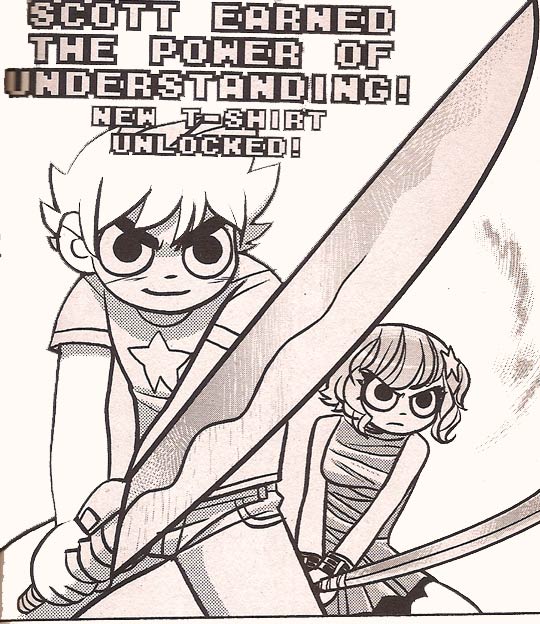Read This: Scott Pilgrim’s Finest Hour

All the subtle clues Bryan Lee O’Malley has sprinkled throughout the previous five volumes of the series come to a head in Scott Pilgrim’s Finest Hour, as he finally confronts the fact that he’s not such a peppy video-game hero—what has often seemed, throughout the story, as spontaneous, upbeat and wacky is finally revealed as a deliberate refusal to acknowledge his mistakes and grow through them—an undertaking so comprehensive that he’s actually written over his own memories, from the high school battle with Simon Lee to the unraveling of his relationship with Envy. (This calls the gaming aspects of the Pilgrim universe into question momentarily, but not so much that the final showdown with Gideon won’t turn into a sprawling epic.)
What started out as a cutesy metaphor in Scott Pilgrim’s Precious Little Life has gradually shifted into a serious meditation on emotional maturity, arrested development, and adult relationships. (And, if I’m not mistaken, the field of cultural references has expanded: Are those Brazil and Crouching Tiger, Hidden Dragon allusions I see in the artwork?) The last three volumes of the graphic novel diverges significantly from the movie—which is in large part due to O’Malley’s spreading the story out over several months, while Edgar Wright compresses the action into a few days—and that winds up giving the books far more opportunity to explore Scott’s emotional development. Although Michael Cera does a great job of revealing what a self-absorbed jerk Scott can be, the character’s self-discovery is almost completely elided over, more of a loose-end tie-up than an actual resolution. As much as I enjoyed the movie, I highly encourage you to track down the books, and dedicate at least one weekend to engrossing yourself in them.
19 August 2010 | read this |

 Our Endless and Proper Work is my new book with Belt Publishing about starting (and sticking to) a productive writing practice.
Our Endless and Proper Work is my new book with Belt Publishing about starting (and sticking to) a productive writing practice. 
